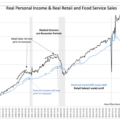- The Canadian Dollar churned in familiar territory on Tuesday.
- CPI inflation data from Canada did little to spark faith in CAD.
- Looming Fed rate call pushes markets into standby mode.
The Canadian Dollar (CAD) settled into familiar territory in the midrange on Tuesday after unimpressive Canadian Consumer Price Index (CPI) inflation data failed to spark a bid in CAD flows. The Federal Reserve’s (Fed) rate call due on Wednesday looms large over global markets, quashing any one-sided moves in market flows.
Canada printed a raft of CPI data broadly below expectations, with August’s headline CPI figure contracting for the second time in 2024. National YoY figures also came in below expectations, and the Bank of Canada’s (BoC) own measure of core CPI inflation cooled further on an annualized basis.
Daily digest market movers
- Canadian CPI figures for August broadly came in below expectations on Tuesday, hobbling the CAD’s chances of finding momentum before the Fed’s expected rate cut comes in for a landing during the midweek market session.
- Canadian headline CPI inflation eased to 2.0% for the year ended in August, below the forecast 2.1% and easing back even further from the previous 2.5%.
- MoM Canadian CPI inflation contracted by -0.2% in August, missing the expected 0.1% print and down from the previous month’s 0.4% uptick.
- The BoC’s own measure of annualized core inflation eased back to 1.5% from the previous 1.7%.
- Global markets are pivoting to face the Fed’s upcoming rate call on Wednesday, which is universally expected to kick off a new rate cutting cycle.
- The Fed is expected to cut its main reference rate by 25-50 bps for the first time in over four years.
Canadian Dollar PRICE Today
The table below shows the percentage change of Canadian Dollar (CAD) against listed major currencies today. Canadian Dollar was the strongest against the Japanese Yen.
| USD | EUR | GBP | JPY | CAD | AUD | NZD | CHF | |
|---|---|---|---|---|---|---|---|---|
| USD | 0.13% | 0.40% | 1.04% | 0.07% | -0.08% | 0.23% | 0.23% | |
| EUR | -0.13% | 0.28% | 0.90% | -0.10% | -0.21% | 0.10% | 0.10% | |
| GBP | -0.40% | -0.28% | 0.65% | -0.34% | -0.49% | -0.17% | -0.20% | |
| JPY | -1.04% | -0.90% | -0.65% | -0.97% | -1.11% | -0.79% | -0.82% | |
| CAD | -0.07% | 0.10% | 0.34% | 0.97% | -0.14% | 0.19% | 0.14% | |
| AUD | 0.08% | 0.21% | 0.49% | 1.11% | 0.14% | 0.31% | 0.26% | |
| NZD | -0.23% | -0.10% | 0.17% | 0.79% | -0.19% | -0.31% | -0.03% | |
| CHF | -0.23% | -0.10% | 0.20% | 0.82% | -0.14% | -0.26% | 0.03% |
The heat map shows percentage changes of major currencies against each other. The base currency is picked from the left column, while the quote currency is picked from the top row. For example, if you pick the Canadian Dollar from the left column and move along the horizontal line to the US Dollar, the percentage change displayed in the box will represent CAD (base)/USD (quote).
Canadian Dollar price forecast
The Canadian Dollar (CAD) continues to struggle to find footing in broader FX markets. The CAD is waffling in familiar territory against the USD, keeping USD/CAD hobbled just south of the 200-day Exponential Moving Average (EMA) at 1.3617.
1.3600 continues to be a long-term inflection point for USD/CAD. Greenback bidders remain unable to muscle the US Dollar over the key technical level, but a lack of bullish interest in the CAD has left the Loonie pairing to spin circles.
USD/CAD daily chart
Canadian Dollar FAQs
The key factors driving the Canadian Dollar (CAD) are the level of interest rates set by the Bank of Canada (BoC), the price of Oil, Canada’s largest export, the health of its economy, inflation and the Trade Balance, which is the difference between the value of Canada’s exports versus its imports. Other factors include market sentiment – whether investors are taking on more risky assets (risk-on) or seeking safe-havens (risk-off) – with risk-on being CAD-positive. As its largest trading partner, the health of the US economy is also a key factor influencing the Canadian Dollar.
The Bank of Canada (BoC) has a significant influence on the Canadian Dollar by setting the level of interest rates that banks can lend to one another. This influences the level of interest rates for everyone. The main goal of the BoC is to maintain inflation at 1-3% by adjusting interest rates up or down. Relatively higher interest rates tend to be positive for the CAD. The Bank of Canada can also use quantitative easing and tightening to influence credit conditions, with the former CAD-negative and the latter CAD-positive.
The price of Oil is a key factor impacting the value of the Canadian Dollar. Petroleum is Canada’s biggest export, so Oil price tends to have an immediate impact on the CAD value. Generally, if Oil price rises CAD also goes up, as aggregate demand for the currency increases. The opposite is the case if the price of Oil falls. Higher Oil prices also tend to result in a greater likelihood of a positive Trade Balance, which is also supportive of the CAD.
While inflation had always traditionally been thought of as a negative factor for a currency since it lowers the value of money, the opposite has actually been the case in modern times with the relaxation of cross-border capital controls. Higher inflation tends to lead central banks to put up interest rates which attracts more capital inflows from global investors seeking a lucrative place to keep their money. This increases demand for the local currency, which in Canada’s case is the Canadian Dollar.
Macroeconomic data releases gauge the health of the economy and can have an impact on the Canadian Dollar. Indicators such as GDP, Manufacturing and Services PMIs, employment, and consumer sentiment surveys can all influence the direction of the CAD. A strong economy is good for the Canadian Dollar. Not only does it attract more foreign investment but it may encourage the Bank of Canada to put up interest rates, leading to a stronger currency. If economic data is weak, however, the CAD is likely to fall.



